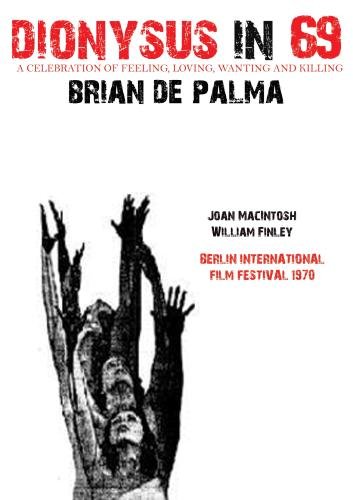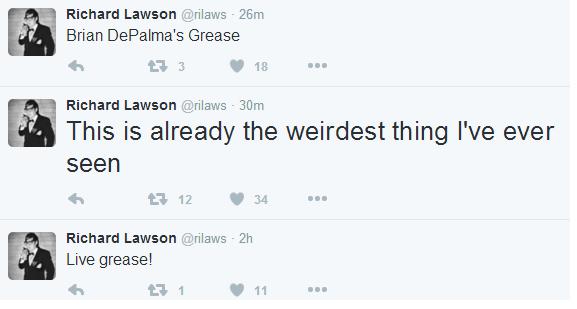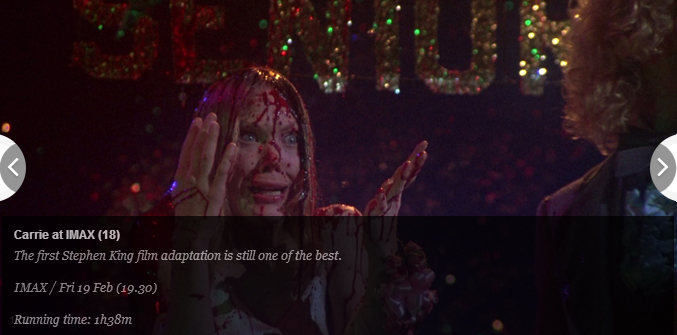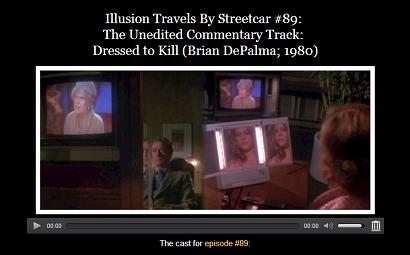"AS HEADACHE-INDUCING AS IT IS MIND-EXPANDING"
 Today at Every '70s Movie, Peter Hanson looks at Dionysus In '69. "Experimental theater being what it is," Hanson begins, "any document of this offbeat genre is sure to divide audiences. As such, something like Dionysus in ’69 can’t be appraised in only one way. Those with adventurous spirits and an eagerness to see postmodern rethinks of longstanding storytelling conventions will be able to appreciate Dionysus in ’69 as a form of artistic exploration. Concurrently, those who enjoy understanding what the hell they’re watching will lose patience quickly. Even those who seek out Dionysus in ’69 because of Brian De Palma’s involvement are likely to be confounded. The picture has a couple of significant connections to the director’s later work, but he didn’t conceive or singlehandedly helm the piece, [and] the execution is avant-garde in the extreme."
Today at Every '70s Movie, Peter Hanson looks at Dionysus In '69. "Experimental theater being what it is," Hanson begins, "any document of this offbeat genre is sure to divide audiences. As such, something like Dionysus in ’69 can’t be appraised in only one way. Those with adventurous spirits and an eagerness to see postmodern rethinks of longstanding storytelling conventions will be able to appreciate Dionysus in ’69 as a form of artistic exploration. Concurrently, those who enjoy understanding what the hell they’re watching will lose patience quickly. Even those who seek out Dionysus in ’69 because of Brian De Palma’s involvement are likely to be confounded. The picture has a couple of significant connections to the director’s later work, but he didn’t conceive or singlehandedly helm the piece, [and] the execution is avant-garde in the extreme."In the concluding paragraph, Hanson focuses on the film's use of split-screen throughout: "De Palma, who shares an 'a film by' credit with fellow NYU students Bruce Joel Rubin (later an Oscar winner for writing the 1990 hit Ghost) and Robert Fiore, employs one of his favorite cinematic devices, split-screen photography. Therefore, the entire 85-minute film comprises two angles of grungy-looking black-and-white images projected side-by-side. As with everything else about Dionysus in ’69, the split-screen effect is as headache-inducing as it is mind-expanding. Incidentally, Dionysus in ’69 received an X-rating during its original release, though its edgiest elements are full-frontal nudity, rough language, and simulated sex."




 Brian De Palma's The Fury is now available to watch on Netflix Streaming, as well as on Amazon, iTunes, Vudu, Google Play, and YouTube.
Brian De Palma's The Fury is now available to watch on Netflix Streaming, as well as on Amazon, iTunes, Vudu, Google Play, and YouTube. 





